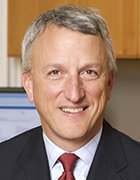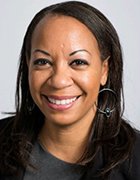CIOs share their 2019 tech resolutions
We asked five CIOs to share their tech resolutions for the new year. Ambition is sky high. Projects include RPA, AI that can handle sensitive data, scaling the business and more.
A majority of IT budgets are up, with CEOs and boards looking for CIOs to deliver technologies that drive and help differentiate their businesses. The CIOs we're hearing from are taking on the challenge.
The breadth of CIO goals in 2019 was borne out by the results of the most recent edition of TechTarget's exclusive IT Priorities Survey, which identified the top eight drivers of digital transformation. They range from inwardly focused initiatives such as streamlining operations and improving employee productivity to accelerating time to market.
Here, five CIOs share their tech resolutions for the new year in more detail. While varied in the particulars and appropriately tailored to their companies, their CIO goals showcase IT leaders functioning as full-fledged partners to the business.
Editor's note: The following excerpts have been edited for clarity and brevity.
Tech resolutions for the new year from five CIOs
ELIZABETH HACKENSON, CIO at Schneider Electric, a global specialist in energy management and automation:
"I believe a combination of RPA [robotic process automation] and APIs will collectively drive digitization at a faster pace. These technologies, coupled with Agile/DevOps methodologies, give businesses the ability to rapidly deploy digital solutions to their customers. APIs will be center stage as we look to move more to the cloud, provide real-time data to our customers and employees, and unlock access to existing systems and data.
"I believe there will be a shift toward local interaction when speed is of the essence and toward more of a DevOps mindset, allowing for quick experimentation/product launch and rapid refinement. Embracing digital is essential to survival for most industries and businesses; therefore, as a CIO you must be able to first understand digital technologies, and then work with your stakeholders to leverage the [technologies that are] most appropriate."
 Joel Jacobs
Joel Jacobs
JOEL JACOBS, vice president and CIO at The Mitre Corp., a not-for-profit company operating multiple federally funded research and development centers:
"The No. 1 thing I'm putting my energy into right now is reimagining our business. In the last year and a half, we had a company restructuring that gives us the opportunity to make major moves in our business processes that we always had a reason not to do -- not because we didn't want to, but because of organizational complexity. So, we're looking to simplify and detangle processes to take friction out of our environment. That will likely mean changing out some of core business systems and the bolt-ons we acquired or built -- work we've delayed too long in my view.
"Another thing that will take a lot of energy will be analytics platforms and analytics platforms that can handle sensitive data. This is a big deal for us. Our staff and researchers need a wide variety of tools, from artificial intelligence (AI) and machine learning to less exotic analytics tools, but the data in many of our businesses is very sensitive, so the ability to have platforms that are accredited to handle that data is a big push for us. Those are the two biggest ones that will consume most of my personal time. I have a long list of other substantial improvements, but I'm trying to make sure that I'm empowering directors to take those on instead of me."
 Paul Chapman
Paul Chapman
PAUL CHAPMAN, CIO at Box Inc., a cloud content management and file sharing service for businesses based in Redwood City, Calif.:
Chapman wrote that his top three tech resolutions for the new year are:
"1. Workplace productivity: How to take the work out of work and create frictionless experiences for our employees so that they can be their most productive selves.
"2. Scaling our business to $1 billion-plus [and asking] how can my team introduce more machine learning and digital labor into our core business process to allow us to scale in a more automated and less labor-intensive way.
"3. Becoming one of the most referenceable examples of how to run a business at scale in a best-of-breed services ecosystem as a result of being born in the cloud."
 Chani A. Cordero
Chani A. Cordero
COL. CHANI A. CORDERO, CIO at Carl R. Darnall Army Medical Center in Fort Hood, Texas:
"My goal for this year is to increase our virtual health capabilities, looking at the technology tools and information needed and assisting the clinicians with what kind of appointment types to go after.
"Also important is establishing a standard approach to service management. I'm a big fan of ITIL, but we don't have a lot of that structure here. I just started here in 2018, so, this year, I'm looking at establishing basic IT operations standards that we're lacking.
"Another one of my [tech resolutions for the new year] is to improve interactions and relationships with my staff and managers. I want to build a 'team of teams' so we can understand the bigger picture. This idea of team of teams actually comes from the book Team of Teams: [New Rules of Engagement for a Complex World]. The foundation of it is that you have to have individual teams that are put together for a purpose.
"But if you have all these different teams, you have to be careful not to have silos; you have to make sure each team works with other teams and make sure each team understands the others' workflows and processes. I've discovered that while my teams are functionally aligned, they don't know what the pain points are for each other. So, one of the overarching goals is to have a mandatory sit-down to share what each one does and how they support the other teams."
 Marty Boos
Marty Boos
MARTY BOOS, CIO at StubHub, an online ticket exchange based in San Francisco:
"One of the goals that I need to succeed at in order to enable what's going on in the company -- and you're probably going to hear this from a lot of CIOs -- is retiring our technical debt. Code written 15 or 16 years ago -- we still have some of that running in production. We have code that's still monolithic. So, it's modernizing that and moving onto our own private cloud and eventually into the public cloud. We want to move half our code into a modernized stack in 2019."







